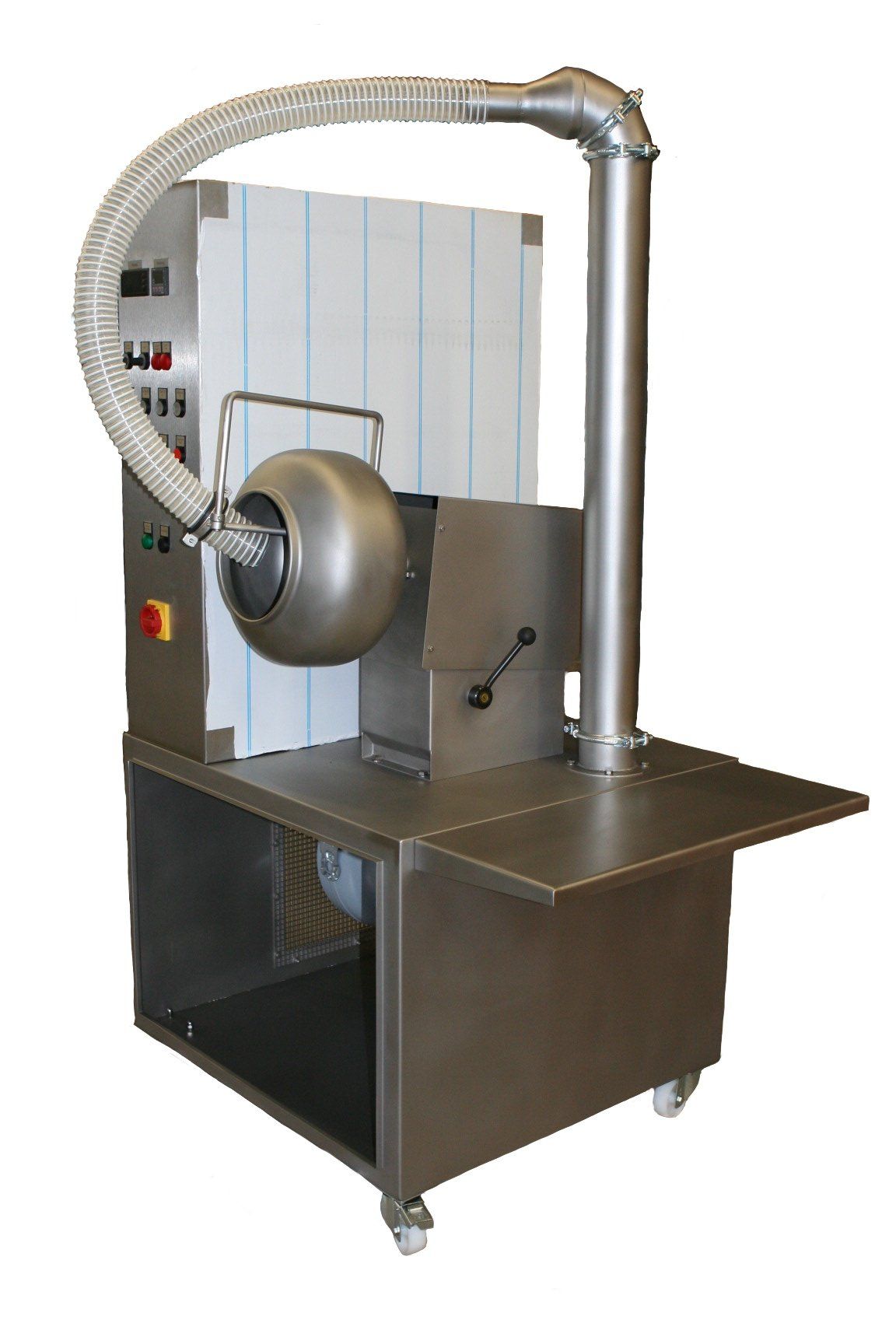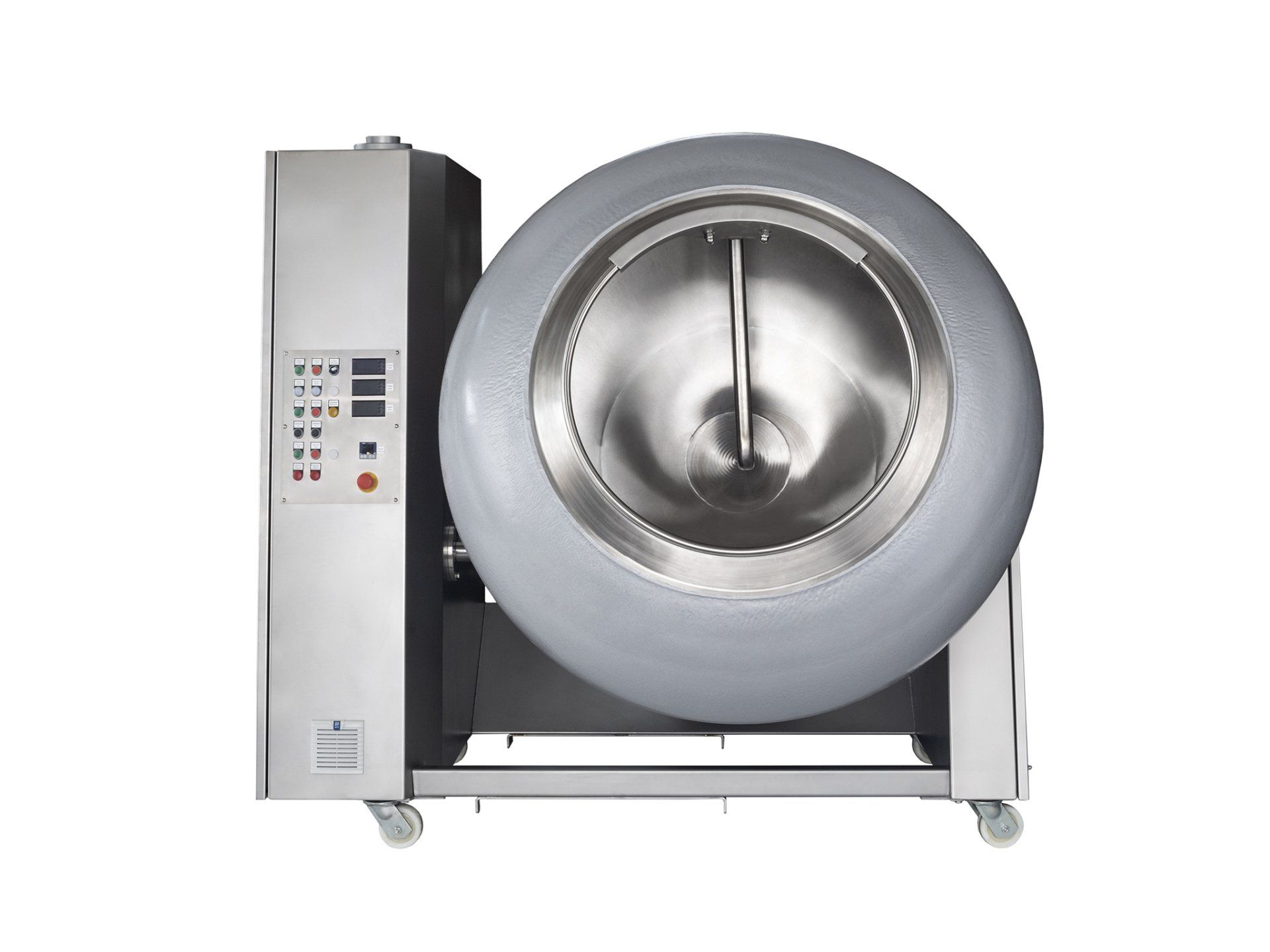Find out more about our high-quality coating- and sugarcoating systems.
When coating bulk goods, it is particularly important to use reliable systems that cover the product evenly with a high-quality layer without sticking it.
We guarantee you this with our tailor-made coating and sugar-coated systems with filling quantities from 5l to 2000l. Whether for test runs in the laboratory or for production - we offer you the optimal solution for your problem. We provide you with high-quality coating systems that are specially made for your needs.
Do you only need certain components? We would also be happy to manufacture individual components for you. From containers such as coating kettles to substructures for coating systems to process air systems and more. We are at your side with our knowledge. Tell us about your project - we will develop your solution.
Laboratory systems for coating food and medicinal products
We provide you with laboratory systems of various sizes, which are adapted to your project in consultation with you. If necessary, a process air system is integrated which regulates the exhaust and supply air. In addition, the angle of the kettles can be adjusted automatically or manually, depending on the design.
We would be happy to design fully automatic laboratory systems for you with universal application options. These include coating systems for sugar and chocolate coating as well as film coating.
Coating systems for efficient filming.
In order to sugar-coat your products as high-quality and gentle as possible, we work out individual solutions with you. A conventional coating system with a functional design, simple operation and a fixed boiler angle is ideal for prompt and solid problem solving.
If necessary, we can produce a coating or sugar-coating system for you with a special frame that enables a swiveling pan and is precisely tailored to your individual needs.
Another solutionexamples:
What is Coating? Which Coating processes are common?
Coating
Coating is the process of applying a certain coating material to the surface of an object. This is usually done with the help of a coating system. The purpose of this coating can be both functional and optical in nature. A functional and visual purpose in combination are also possible.
Examples of a multifunctional coating are paints or varnishes that protect an object from things such as corrosion and also improve the aesthetics. With reference to the food sector, chocolate and sugar coatings are multi-purpose coatings as they protect the product, change its appearance and add a certain taste note. Sugar coatings are also used in the manufacture of medicines and tablets. Additional functions here are holding the tablet together and protecting against premature absorption.
Coating processes
Barrel coating: Coating barrelss are mostly partially or fully perforated. A distinction is made here in the type of air flow: The coating system operates either with cocurrent or countercurrent. With the cocurrent method, the supply air is fed in from above and the exhaust air is discharged downwards. As the name suggests, the spray liquid and drying air flow in the same direction as the coating drum rotates.
With the counterflow method, the supply air is supplied from below. The exhaust air is discharged upwards. The spray liquid and drying air move in the opposite direction to the barrel movement.
The barrel of the coating system rotates around its longitudinal axis and thus ensures that the bulk material is continuously in motion. This creates a more even coating.
Fluidized bed coating: This process is particularly suitable for film coating. A stream of air keeps the product to be coated in suspension. Meanwhile, it is evenly wetted with the film-forming liquid and dried.
With fluidized bed coating, a distinction is made between top spray, bottom spray and tangential spray coating, depending on where the nozzle is located in the drum.
Top-Spray-Coating: Serves for improved storage stability. In the coating system, the spray nozzles are located above the product container. A diffusion of the liquid particles is ensured by means of compressed air. Since the distances between the product particles and the nozzles are of an uneven nature, porous structures can occur on the product.
Bottom spray coating: The spray nozzles are located on the floor and spray the product accordingly from below.
Tangential-Spray-Coating: With this type of process, the spray nozzles are attached to the side. Air enters the drum via an inflow base and sets the product particles in motion.
Wurster Process: This coating process developed by Dale E. Wurster is used in fluidized bed coating. Similar to bottom spray coating, the spray nozzles are located in the inflow base and thus reach any and all product particles. Because of this, a very even coating can be achieved, even with non-spherical goods, among other things.
The heart of this process is a circulating fluidized bed, which is generated by a cylinder with a riser pipe and base plate with different sized drill tubes. This creates a controlled movement of particles within the coating system, which enables the products to be coated evenly.
Quellen: Wikipedia, Collinsdictionary







